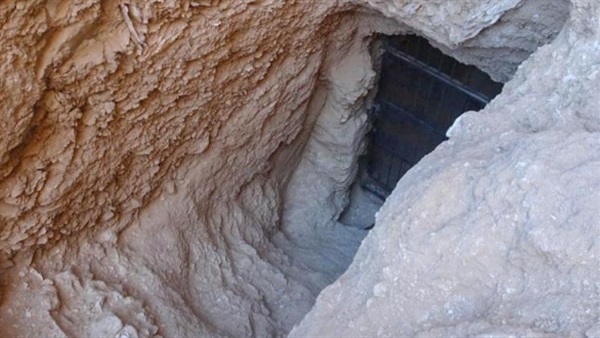Ancient Egyptian tomb may be royal female from rule of Thutmosid pharaohs

A tomb dating back 3,500 years to a golden age of ancient Egypt
has been uncovered by a joint British and Egyptian team near the Valley of the
Kings.
The discovery on the western bank of the Nile in modern-day
Luxor may be the final resting place of one of the queens or princesses of the
18th Dynasty (1550 to 1292BC). The Thutmosid pharaohs of that dynasty include
some of the most famous rulers of ancient Egypt, such as Tutankhamun,
Hatshepsut, Thutmose III and Amenhotep II.
If confirmed to be the tomb of a female royal, it would be
the first such discovery in the necropolis for more than a century, the experts
said.
Piers Litherland, the British head of the New Kingdom
Research Foundation, a private project working with the Supreme Council of
Antiquities, in Cairo, said the tomb “probably belonged to one of the royal
wives or princesses during the period of Thutmosid rule”. He said a large
number of them had yet to be uncovered.
Litherland said the tomb could be for a daughter or consort
of Thutmose II or III, the fifth and sixth pharaohs of the dynasty and the
ancestors of Tutankhamun. “There is a cliff tomb above the new tomb and the
tomb of the Three Foreign Wives of Thutmose III is 500 metres (1,600ft) to the
northwest,” Litherland said. “This [area] is now emerging as a burial ground
for royal women of the early 18th Dynasty.”
He ruled out that it could be the burial place of Nefertiti,
Tutankhamun’s stepmother, the location of which has triggered speculation for
decades.
The Egyptian Ministry of Antiquities said further studies
would reveal more about the secrets of the tomb, of which only a staircase cut
into the rock, two corridors and one partly painted chamber have been
uncovered.
“Three chambers have
been discovered so far, there is one further chamber we can see on the main
axis but we do not know what is beyond that,” Litherland said. “The tomb has
been entered in ancient times but it has certainly not been disturbed since the
Third Intermediate Period [3,000 years ago]. I suppose the hope is that the
collapsed chambers might hold material that has not been disturbed since the
original burials but that is highly speculative.”
Fat’hi Yaseen, director-general of Upper Egypt Antiquities
and head of the project in Egypt, said if the tomb belonged to one of the royal
wives, it would be the first such discovery since the intact burials of
Thutmose III’s three “Foreign Wives” were found in 1916.
“We hope that with the removal of debris, inscriptions,
canopic vessels or parts of funerary furniture will be found,” Yaseen said.
Mohsen Kamel, an Egyptian archaeologist, said the tomb’s
interior was in poor condition, however. Parts of it, including inscriptions,
were “destroyed in ancient floods which filled the burial chambers with sand
and limestone sediment”, Kamel added.
There have been several important archaeological discoveries
in Egypt in recent years, notably in the Saqqara necropolis south of Cairo, as
it seeks to revive tourism with new museums to showcase its ancient heritage.
The New Kingdom Research Foundation, founded by Litherland
and colleagues from Cambridge University, has been working in the western wadis
of Luxor for five years but it may take a while until the tomb is fully
excavated.
“Given the state of
the tomb and the fact that we are having to rebuild much of the interior to
make it safe, it will take two to three years,” Litherland said.







